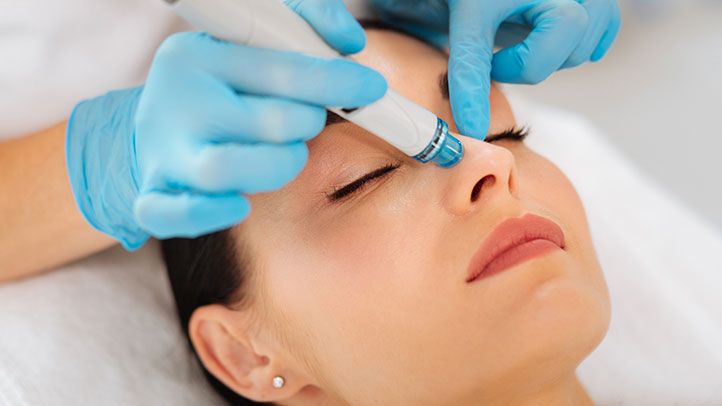Modern self-care routines and wellness practices include skincare treatments. Many people seek professional skin care treatments for a variety of reasons, including treating acne, manageing skin conditions such as eczema and psoriasis, or reducing the signs of ageing. The cost of these treatments is one of the main concerns. Many people wonder if their health insurance will cover these costs. Answers are not always clear. The insurance coverage for skincare treatments is dependent on a number of factors, such as the type of treatment, the reason for the procedure, and your specific policy. Understanding these factors will help you make an informed decision and possibly save money for your skincare needs.
Understanding Insurance Coverage for Skin Care Treatments
Medical expenses are typically classified by insurance companies into two categories: elective procedures or cosmetic treatments and medically necessary treatment. Medically necessary treatment is required to treat a medical condition such as severe acne or skin cancer. Insurance companies often cover these treatments because they’re considered vital to a person’s health and well-being. The insurance companies do not cover cosmetic or elective procedures such as Botox to treat wrinkles, laser skin rejuvenation, or chemical peels that are used for aesthetic reasons.
It is important to know the terms and conditions of your insurance plan. Some policies offer partial coverage of certain treatments while others exclude them completely. Understanding the difference between cosmetic and medical procedures will help you determine if your skincare treatment is covered.
What Skincare Treatments Are Typically Covered by Insurance?
Insurance will likely cover a skin treatment if it is medically necessary. Dermatological treatments such as psoriasis and eczema are examples of medically necessary skincare treatments. Insurance may cover costs if a doctor prescribes treatment for a skin condition that is affecting your health.
Insurance may also be applicable when a skin condition is the reason for requiring a treatment. Insurance may cover a laser treatment for a severe case of rosacea or a chemical skin peel to reduce scarring caused by a medical condition. Treatments for precancerous conditions of the skin or removal of cancerous lesions are often covered. Insurance policies usually cover skin biopsies and mole removals as well as light therapy to treat specific medical conditions.
Even if the treatment is covered by insurance, you may still have to pay out-of-pocket costs such as copays or deductibles. There might also be limitations on how many sessions are allowed. To understand the potential costs, it is important to review your policy in detail and to consult your healthcare provider.
What Skincare Treatments Are Not Covered by Insurance?
Insurance rarely covers cosmetic skincare treatments that are performed solely for aesthetic purposes. Botox, fillers, and microdermabrasion are all considered elective procedures. Insurance companies will not cover these treatments, even if they are essential for a person’s self-confidence.
Acne treatments that do not qualify as medically essential may also be denied coverage. Insurance benefits may be available for severe acne treatments, but milder cases of acne that can be treated with over-the-counter products or nonprescription therapies are not covered. Insurance plans do not cover treatments that are purely cosmetic, such as those that reduce fine lines, wrinkles, or hyperpigmentation.
Insurance will not pay for tattoo removal unless it is medically necessary. If you want to remove tattoos from your body for personal reasons, then you will have to pay for it yourself. The same goes for procedures such as chemical peels or laser hair removal that are done primarily to improve appearance and not health.
Determine If Your Insurance Covers A Skincare Treatment
Consult your dermatologist if you’re unsure if insurance will cover a treatment. They can determine if your treatment is medically needed and provide documentation to support insurance claims. Most insurance companies require a physician’s note, records of medical treatment, or a diagnosis to approve coverage for skincare procedures.
Ask your insurer about the coverage details. Ask about your specific plan terms, such as what treatments are covered, pre-authorisations, and any potential out-of-pocket expenses. Ask about copayments and deductibles if a treatment is only partially covered. Also, find out if you need to consult your primary care doctor.
There may be other ways to cut costs if your insurance doesn’t cover certain treatments. Some dermatologists provide payment plans, discounts, or financing options to cover cosmetic treatments. Health savings accounts (HSAs), flexible spending accounts, or other accounts that cover dermatological treatment may also be available.
Alternative Payment Options for Skincare Treatments
There are other ways to control costs for those whose insurance doesn’t cover the desired skincare treatment. Some dermatology clinics have membership programs and discounts for returning clients. These programs can help reduce the cost of regular treatments like facials, laser therapy, and peels.
You can also look for research or clinical studies that provide free or discounted skin treatments. Many universities, research centres, and pharmaceutical companies conduct studies on new skin treatments and offer free procedures as an incentive for participants.
Patients can pay in installments using medical credit cards and financing options such as CareCredit. Spreading payments over time can help make expensive procedures more affordable. HSAs and FSAs can also be used to pay for treatment that is not covered by insurance.
Conclusion
Insurance coverage for skincare treatments depends on whether a procedure is considered medically necessary or cosmetic. Most insurance companies cover treatments for skin conditions such as severe acne, rosacea, or eczema. Cosmetic procedures like Botox, fillers, and laser resurfacing are not covered. It is important to consult your dermatologist as well as your insurance provider in order to determine whether your treatment is covered by insurance. If your treatment isn’t covered, you can still manage the cost through other methods, such as financing, discount programmes, and health savings accounts. Knowing your insurance coverage and the available payment options will help you to make the right decisions about your skincare.
FAQs
1. Does insurance cover laser treatment for acne scars?
If the insurance company deems it medically necessary (such as when scarring is affecting physical health), they may cover laser treatment for acne scars. Treatments done purely for cosmetic purposes are not usually covered.
2. Does insurance cover Botox treatment for medical conditions such as a migraine?
Insurance may cover Botox when it’s prescribed to treat medical conditions such as chronic migraines or excessive sweating. Botox used to treat wrinkles and fine lines is not covered by insurance because it is considered cosmetic.
3. Can I use HSA or FSA funds for skincare treatments?
Health savings accounts (HSAs) and flexible spending accounts (FSAs) can be used for certain medically necessary skincare treatments even if your regular insurance doesn’t cover them. The only exception is cosmetic procedures.
4. Do I require a doctor’s referral to get my insurance to pay for dermatology treatments?
Some insurance policies require a dermatology referral from your primary care physician before they will cover the treatment. Check with your insurance company to determine if a prescription is required.
5. What should I do when my insurance company denies coverage of a needed skincare treatment?
You can appeal a decision if your insurance company denies coverage by providing medical documentation from your physician. There are also payment plans or alternative financing options offered by dermatology practices.




